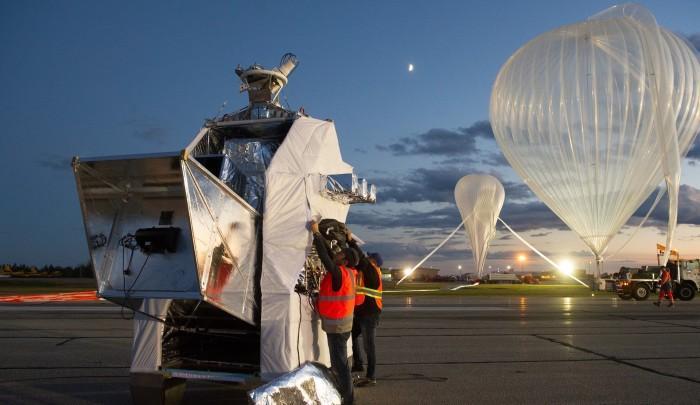France and Australia signed a cooperation agreement on 21st July concerning the PILOT (Polarized Instrument for Long-wavelength Observations of the Tenuous interstellar matter) mission set to launch from Alice Springs in March-April 2017. The agreement was signed by CNES President Jean-Yves Le Gall and Larry Marshall, Chief Executive of the Commonwealth Scientific and Industrial Research Organization (CSIRO).
The goal of the PILOT mission is to map the direction and intensity of the Milky Way’s magnetic field and to gain new insights into the magnetic properties of interstellar dust grains.
CNES has been working with Australia since the 1980s, when a SPOT receiving station was set up there, and is continuing to do so today with two DORIS receiving stations. Australia has been in talks with France in recent months on scientific ballooning, leading to this latest cooperation agreement.
Under this agreement, CNES will now start gearing up for an extensive balloon flight campaign operating out of Alice Springs, Australia, from mid-March to end April next year. Among the scientific experiments to be flown is the emblematic PILOT mission devised by France’s IRAP astrophysics and planetology research institute. PILOT will measure the polarized emission of dust grains in the interstellar medium in order to precisely map the polarization of galactic radiation from the southern hemisphere.
Observations from Australia will cover parts of the sky that can only be viewed from this region of the globe, i.e., the galactic centre of the Milky Way, the Large and Small Magellanic Clouds and parts of the southern sky only seen from telescopes at bases at the South Pole in the Antarctic and in Chile.
The challenge is to map the galaxy’s magnetic field and analyse its role in the cycle of matter, looking at dust clouds and the formation of stars and planets. The balloon launch will be conducted from the Alice Springs base in Australia’s Northern Territory, with support from teams at CSIRO and the University of New South Wales (UNSW).

